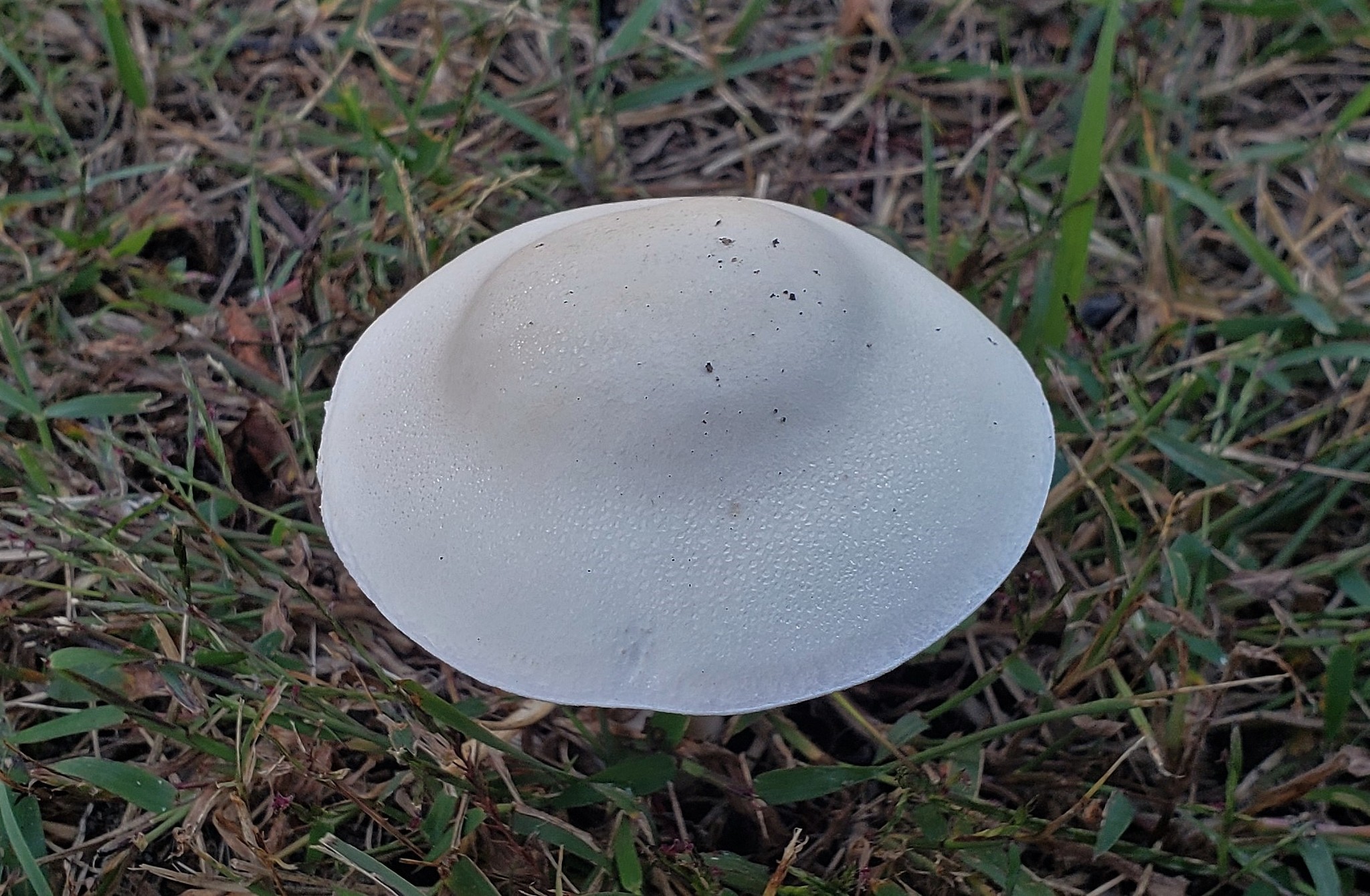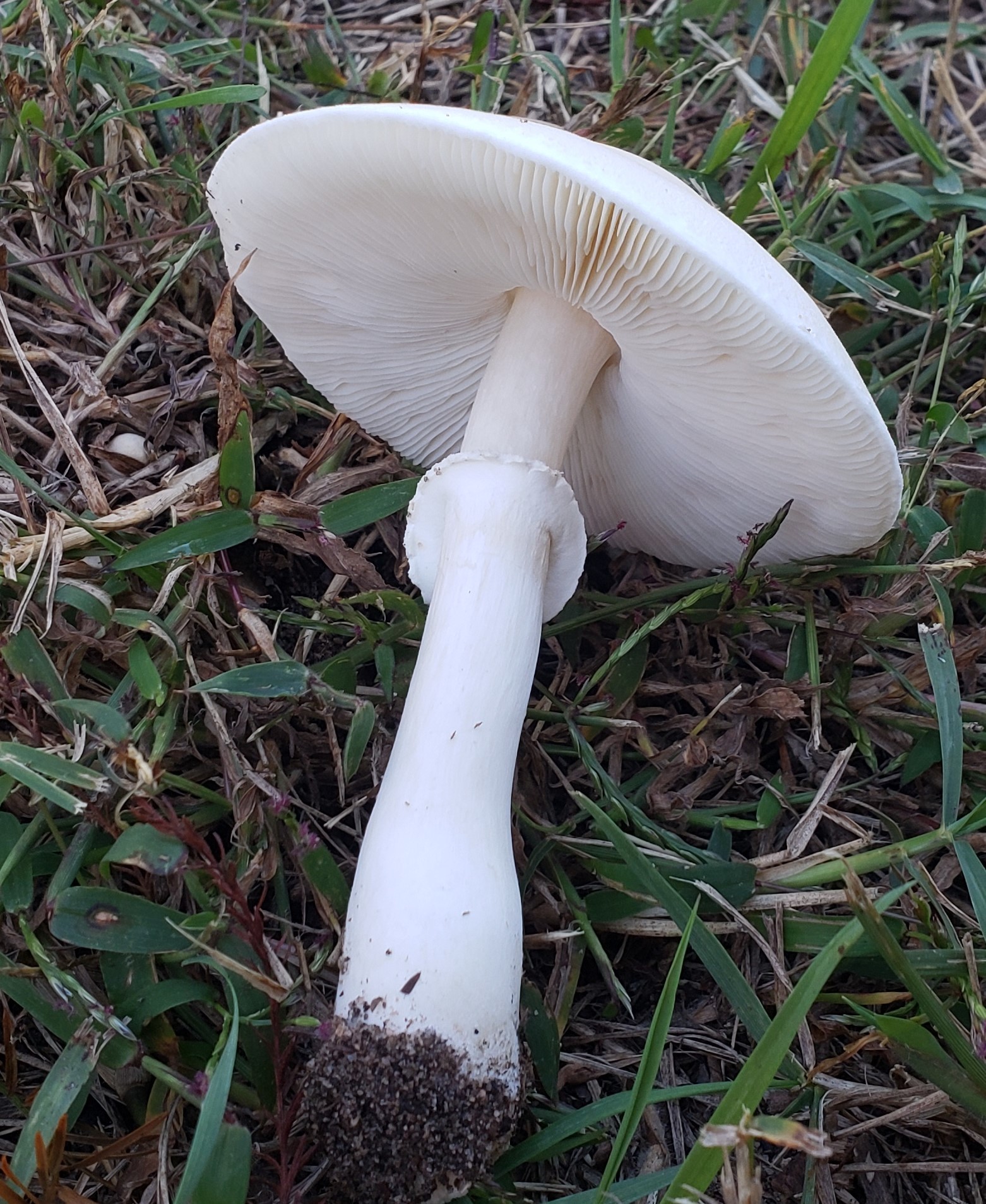Map Snapshot





11 Records
Seasonality Snapshot
Source: Wikipedia
| Leucoagaricus leucothites | |
|---|---|

| |
| Scientific classification | |
| Domain: | Eukaryota |
| Kingdom: | Fungi |
| Division: | Basidiomycota |
| Class: | Agaricomycetes |
| Order: | Agaricales |
| Family: | Agaricaceae |
| Genus: | Leucoagaricus |
| Species: | L. leucothites
|
| Binomial name | |
| Leucoagaricus leucothites (Vittad.) Wasser (1977)
| |
| Synonyms | |
| Leucoagaricus leucothites | |
|---|---|
| Gills on hymenium | |
| Cap is convex or flat | |
| Hymenium is free | |
| Stipe has a ring | |
| Spore print is white | |
| Ecology is saprotrophic | |
| Edibility is unknown | |
Leucoagaricus leucothites, commonly known as the smooth parasol, woman on motorcycle,[2] ma'am on motorcycle,[3] white dapperling, or white agaricus mushroom, is a species of agaric fungus. The species was originally described as Agaricus leucothites by Carlo Vittadini in 1835, and bears similarity to species of that genus.[4] Solomon Wasser transferred it to Leucoagaricus in 1977.[5] While sometimes regarded as edible,[6] the species is suspected of being poisonous due to gastric-upset-causing toxins.[7] It could also be confused with the deadly Amanita ocreata.[6]
The mushroom's cap is 4 to 15 cm wide,[6] is granular, white or gray-brown in color then sometimes grayish or pinkish.[4] The flesh may bruise yellowish and the gills reddish.[4] The stipe is 5 to 12 cm long, commonly with a wide base, and bruising yellow or brown.[6] A ring is usually present.[4] The spores are white, smooth, and elliptical.[6]
It generally appears in civilized areas such as gardens and parks, but sometimes is found in forests.[4]
See also
[edit]References
[edit]- ^ Wood, Michael; Stevens, Fred. "California Fungi: Leucoagaricus leucothites". MykoWeb. Retrieved 2021-02-15.
- ^ Arora, David (1986). Mushrooms demystified: a comprehensive guide to the fleshy fungi (Second ed.). Berkeley: Ten Speed Press. ISBN 978-0-89815-169-5.
- ^ Arora, David (February 1, 1991). All That the Rain Promises and More: A Hip Pocket Guide to Western Mushrooms. ISBN 9780898153880.
- ^ a b c d e Trudell, Steve; Ammirati, Joe (2009). Mushrooms of the Pacific Northwest. Timber Press Field Guides. Portland, OR: Timber Press. p. 76. ISBN 978-0-88192-935-5.
- ^ Wasser SP. (1977). "New and rare species of Agaricaceae Cohn. family (in Russian)". Ukrainskiy Botanichnyi Zhurnal (in Russian). 34 (3): 305–8.
- ^ a b c d e Davis, R. Michael; Sommer, Robert; Menge, John A. (2012). Field Guide to Mushrooms of Western North America. Berkeley: University of California Press. pp. 89–90. ISBN 978-0-520-95360-4. OCLC 797915861.
- ^ Miller Jr., Orson K.; Miller, Hope H. (2006). North American Mushrooms: A Field Guide to Edible and Inedible Fungi. Guilford, CN: FalconGuide. p. 55. ISBN 978-0-7627-3109-1.
External links
[edit]

